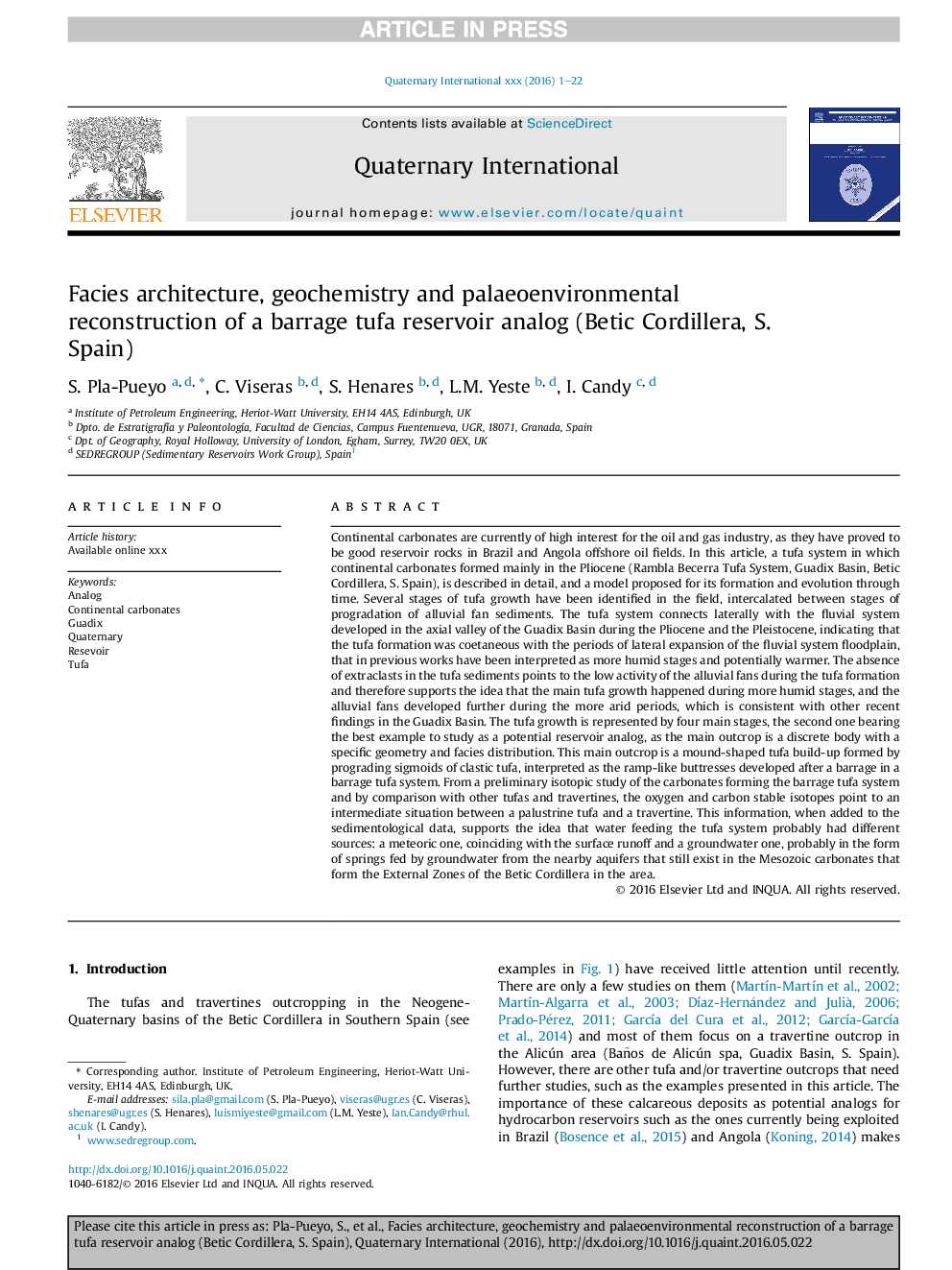| کد مقاله | کد نشریه | سال انتشار | مقاله انگلیسی | نسخه تمام متن |
|---|---|---|---|---|
| 5113599 | 1377941 | 2017 | 22 صفحه PDF | دانلود رایگان |
عنوان انگلیسی مقاله ISI
Facies architecture, geochemistry and palaeoenvironmental reconstruction of a barrage tufa reservoir analog (Betic Cordillera, S. Spain)
دانلود مقاله + سفارش ترجمه
دانلود مقاله ISI انگلیسی
رایگان برای ایرانیان
کلمات کلیدی
موضوعات مرتبط
مهندسی و علوم پایه
علوم زمین و سیارات
زمین شناسی
پیش نمایش صفحه اول مقاله

چکیده انگلیسی
Continental carbonates are currently of high interest for the oil and gas industry, as they have proved to be good reservoir rocks in Brazil and Angola offshore oil fields. In this article, a tufa system in which continental carbonates formed mainly in the Pliocene (Rambla Becerra Tufa System, Guadix Basin, Betic Cordillera, S. Spain), is described in detail, and a model proposed for its formation and evolution through time. Several stages of tufa growth have been identified in the field, intercalated between stages of progradation of alluvial fan sediments. The tufa system connects laterally with the fluvial system developed in the axial valley of the Guadix Basin during the Pliocene and the Pleistocene, indicating that the tufa formation was coetaneous with the periods of lateral expansion of the fluvial system floodplain, that in previous works have been interpreted as more humid stages and potentially warmer. The absence of extraclasts in the tufa sediments points to the low activity of the alluvial fans during the tufa formation and therefore supports the idea that the main tufa growth happened during more humid stages, and the alluvial fans developed further during the more arid periods, which is consistent with other recent findings in the Guadix Basin. The tufa growth is represented by four main stages, the second one bearing the best example to study as a potential reservoir analog, as the main outcrop is a discrete body with a specific geometry and facies distribution. This main outcrop is a mound-shaped tufa build-up formed by prograding sigmoids of clastic tufa, interpreted as the ramp-like buttresses developed after a barrage in a barrage tufa system. From a preliminary isotopic study of the carbonates forming the barrage tufa system and by comparison with other tufas and travertines, the oxygen and carbon stable isotopes point to an intermediate situation between a palustrine tufa and a travertine. This information, when added to the sedimentological data, supports the idea that water feeding the tufa system probably had different sources: a meteoric one, coinciding with the surface runoff and a groundwater one, probably in the form of springs fed by groundwater from the nearby aquifers that still exist in the Mesozoic carbonates that form the External Zones of the Betic Cordillera in the area.
ناشر
Database: Elsevier - ScienceDirect (ساینس دایرکت)
Journal: Quaternary International - Volume 437, Part A, 12 May 2017, Pages 15-36
Journal: Quaternary International - Volume 437, Part A, 12 May 2017, Pages 15-36
نویسندگان
S. Pla-Pueyo, C. Viseras, S. Henares, L.M. Yeste, I. Candy,